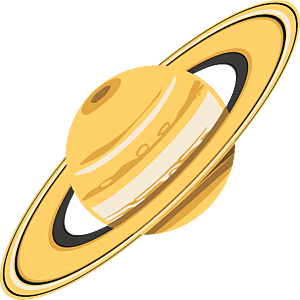The Downlink • Dec 15, 2023
Alien clouds and those that peer through them
Space Snapshot

As NASA’s Juno spacecraft flew low over Jupiter’s cloud tops in March 2023, its JunoCam instrument captured this look at bands of high-altitude haze forming above cyclones in an area known as Jet N7. This image was among those featured in the December issue of The Planetary Report, our quarterly member magazine, which looked back at the year in pictures. Image credit: NASA et al.
Fact Worth Sharing

Like many other missions, the Juno spacecraft's name comes from mythology. The Roman god Jupiter had a habit of trying to hide behind clouds. So his wife, Juno, learned to see through clouds. Her namesake spacecraft can do the same, thanks to its science instruments.
Mission Briefings


A new exoplanet mission is moving forward. The European Space Agency’s Ariel spacecraft will study exoplanetary atmospheres, identifying the chemical elements they contain and looking for potential biosignatures. The mission successfully passed its preliminary design phase B2 and now moves from the “drawing board” to the construction phase. The mission has a planned launch date of 2029. Pictured: An artist’s impression of gaseous exoplanets. Image credit: ESA.

Plumes of water from Enceladus may show signs of a habitable subsurface ocean. NASA’s Cassini spacecraft flew through and analyzed plumes of water erupting from the Saturnian moon’s south polar region in 2008. New analysis of the data collected suggests that the water in those jets may contain chemical compounds that could support existing life or drive the formation of new life.

An asteroid eclipsed the star Betelgeuse this week. The asteroid Leona passed in front of the star from a portion of the Earth’s surface on Dec. 11, partially eclipsing it and causing a momentary dimming in the star’s light. Although this rare stellar eclipse was predicted to be more dramatic — with some predicting that Betelgeuse’s light would even be extinguished for up to seven seconds — no such reports have come in from telescope operators who observed the event.
From The Planetary Society


When it comes to peering through clouds, JWST is a pro. The space telescope’s infrared cameras are specialized at looking through clouds of dust, gas, and other material to witness processes taking place within them. This image, for example, shows stars being born in the center of a nebula. The December issue of The Planetary Report explores the many ways that JWST’s infrared imaging capabilities help us study the Cosmos and the worlds within it. Image credit: NASA et al.

The Earth is a great place to learn about other worlds. In this week’s Planetary Radio, join former host Mat Kaplan and planetary geologist Kirby Runyon as they tour the varied geology of New Mexico — including the dunes of White Sands National Park, the Mars-like geology of Kilbourne Hole, and the rocks in the Carrizozo Lava flow — and compare this familiar place to the alien landscapes of other worlds.

Tomorrow's discoveries begin today! Thanks to your support, this year was filled with projects that took space science, space advocacy, and educational outreach to new destinations — but we can't stop now! You can keep great missions going strong with your year-end contribution today. When you make a gift today your donation will be matched up to $100,000! Your year-end donation — especially when doubled — will go far to help launch us into all the exciting opportunities tomorrow will bring.
What's Up

Jupiter shines very bright, appearing in the eastern skies at dusk and getting higher in the sky as the hours pass. Yellowish Saturn is up in the evening sky as well, a little lower in the sky. The Moon will be close to Saturn on Dec. 17, moving over to join Jupiter on Dec. 21. Super bright Venus shines in the eastern predawn sky. Find out what else to look for in December’s night skies.
Wow of the Week

Planetary Society member Danielle Rose made this watercolor painting to capture the moment that OSIRIS-REx departed Bennu, the asteroid it had been sent to study. A cloud of debris is shown floating off Bennu — the aftermath of OSIRIS-REx’s touchdown as it collected a sample from the rubble pile asteroid. Danielle’s painting was featured on the back cover of the December issue of The Planetary Report. Image credit: Danielle Rose.
Send us your artwork!
We love to feature space artwork in the Downlink. If you create any kind of space-related art, we invite you to send it to us by replying to any Downlink email or writing to [email protected]. Please let us know in your email if you’re a Planetary Society member!


 Explore Worlds
Explore Worlds Find Life
Find Life Defend Earth
Defend Earth

